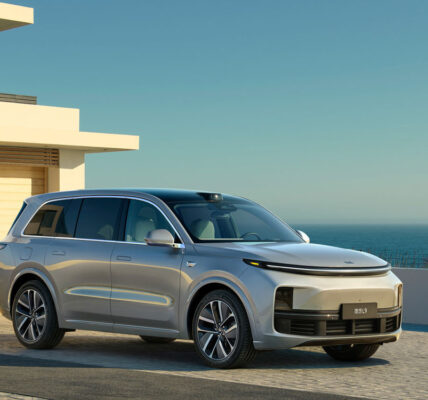In Europe, electric vehicles made in China are common, even though it might not seem like it at first. Last year, out of the roughly 300,000 EVs sold in the European Union, 19.5% were made in China, and that number will only go up, according to a paper published by Transport and Environment, an NGO that bills itself as “Europe’s leading clean transport campaign group.”
The paper predicts that Chinese-made EVs will account for 25% of the EV market share in the EU this year if the trajectory from last year continues. This includes models from Tesla and Dacia (which is owned by Renault), but also from Chinese companies like BYD.
Last year, the biggest importer of Chinese-made EVs in the EU was Tesla (28%), followed by Dacia (20%). However, the rate at which Chinese automakers are ramping up exports into the EU has rapidly increased from just 0.4% of the EV market in 2019 to 7.9% in 2019, according to T&E.
That number is poised to go even higher, with the NGO predicting that homegrown marques like BYD, MG (which used to be British), NIO, and others could reach 20% of the EV market by 2027, which would be a massive increase compared to 2019.
Usually, EVs that are made in China are slightly cheaper than their European-made competitors, which is good for customers. However, buying lots of cars that are manufactured overseas means the money will leave Europe, funding the further development of EVs in China. In the long run, this is a failing strategy, affecting innovation and forcing workers in the EV industry to either work for less money, find other jobs, or even relocate.
That said, T&E offers some solutions to these problems, the biggest one being the increase of import tariffs. Currently, the EU has a 10% import duty for EVs made in China, but the NGO believes that raising that number to 25% would only have positive long-term effects. A similar but more stringent option is being discussed in the United States.
The tariff hike would make Chinese medium-sized EVs more expensive than their EU-made competitors, while compact SUVs and larger cars will remain slightly cheaper, T&E argues. The price increases resulting from the tariff bump would generate between 3-6 billion Euro in additional revenue to the EU budget, which should be reinvested into scaling local clean tech supply chains, the NGO said.
The import tariff on battery cells should also be increased, seeing how it’s currently at just 1.3% in the EU, the lowest compared to China (which charges 10% for EU-made cells) and the United States (10.9% for Chinese-made cells).
Some major Chinese players, like BYD and CATL, are already thinking ahead and are planning to build factories in the EU which would circumvent the increased tariffs while offering job opportunities to local workers, and other companies could follow suit if the bloc decides to up the import duties.
The NGO mentions in its paper that even with higher tariffs, governments shouldn’t aim to shield legacy carmakers from meaningful competition, but rather to localize EV supply chains in Europe and accelerate the EV push by creating a solid regulatory framework, with the end goal being a broader and more affordable offer of EU-made EVs.






